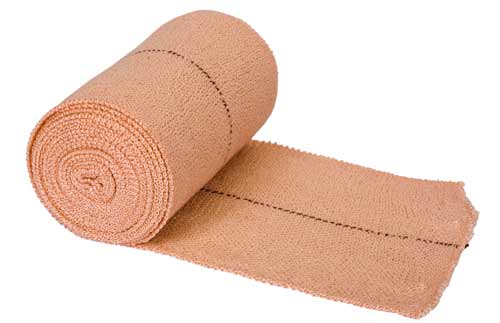Crepe bandages are a type of elastic fabric used to cover wounds or injuries while they heal. They are often placed over stitches, and many people know them as gauze wraps. The name “crepe” comes from the French word for crape, which is a thin type of woolen fabric that was once used in dressmaking. These days, there are different crepe bandages available that stretch more than just like old-fashioned ones did and can be found at most pharmacies. But do you know why they’re called crepes? Let’s find out!
What are the ingredients of crepe bandage?

The key ingredient in these crepe bandages is cellulose, a type of long-chain carbohydrate found in plant fibers like wood and cotton. Gauze fabric is stretched around a thick elastic or cloth base material before being twisted into the familiar crepe shape that you’re probably most familiar with. The sturdier the material used for the backing and the less stretch (but more textured) your crepe bandage, the longer its lifespan will be when protecting wounds. There are many types available; some even come with padding to relieve pain and protect sensitive spots, such as an eye or ear. The new varieties have a greater number of uses than ever before, though they may not hold up against heat or sharp objects as well.
How does crepe bandages work?
Although crepe bandages were once mainly used to cover wounds and stop bleeding, they’ve since been adapted for many other areas of the body. Many doctors in Europe now use them in place of stitches to close up small wounds that aren’t too deep or jagged by pressing the edges together with a tapered object like a cotton swab or toothpick before wrapping and taping the area down with a crepe bandage. Breathing through broken ribs is also easy when wrapped tightly with a gauze roll; this can help protect the lungs from further damage caused by a punctured lung, according to health expert. Speaking of injuries, you may even have seen athletes using these simple bandages to compress and protect ankles, knees, hands, wrists, elbows or shoulders. Crepe wraps can also be used in a medical emergency to help control bleeding if a person’s injury isn’t too serious. They’re also great for keeping splinters embedded in the skin covered while traveling, so you don’t pick them out by accident!
Of course, there are also plenty of other useful things around your house that you probably didn’t know were actually crepe bandages. For instance, try using a wrapped toilet paper roll as an improvised splint for a broken arm or leg before heading off to the hospital. Cleansers like baby oil can be spread to areas with sensitive skin where bandage adhesive might cause irritation; cast padding is less abrasive and can protect areas that need protection but are usually inaccessible. You have a lot of options for finding uses for crepe bandages that may not even involve your skin!
Conclusion:
Now that we know why they’re called crepes, let’s explore some of the many ways people use these convenient fabric bandages every day. And if you ever cut yourself while using one for something unrelated-it happens to the best of us-know that they are good at absorbing clear liquid like blood and sweat, but they can also act as a makeshift dressing for an open wound. If no paramedics or doctors are on hand, wrap it up with a gauze roll before heading off to see a medical professional right away!